How to spot 9 invasive plants and how to stop them from spreading
How to spot stubborn species before they cause damage
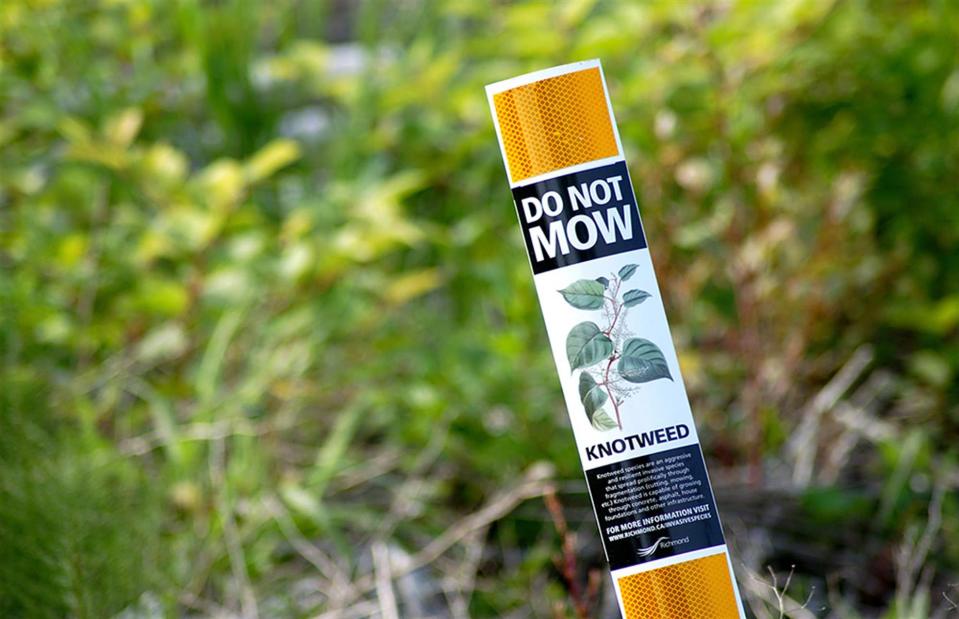
2020 Micah Watson / Shutterstock
Most gardeners are familiar with invasive weeds such as stinging nettles, but did you know some ornamental species also have the potential to become a nuisance? These plants can be both native and non-native to the UK, with the latter varieties having been introduced either directly or indirectly by humans to an area outside where they naturally grow. These stubborn species can not only cause damage to your home and garden but if left to get out of control, can become a threat to other properties. Read on to discover how to identify common invasive plants and how to responsibly treat them if you discover them on your property...
Japanese knotweed (Reynoutria japonica)

2005 John Lumb / Shutterstock
The most well-known of all invasive plants and the one most likely to strike terror into homeowners is Japanese knotweed. If this naughty species grows too close to a property it can damage the foundations, and if left untreated will make a home unmortgageable. In early 2023, a homeowner was ordered to pay £32,000 in damages to the person he sold his home to, plus £200,000 in legal costs, because he ticked a box saying that no Japanese knotweed was present, which later proved not to be the case.
How to identify Japanese knotweed
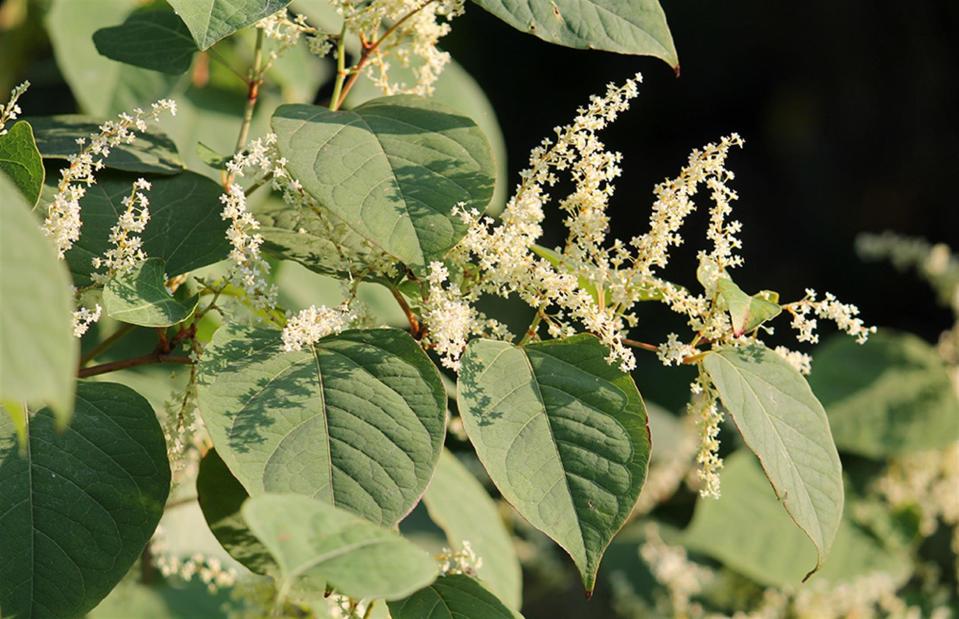
2018 Kazakov Maksim / Shutterstock
Japanese knotweed can look very different depending on what time of year it is: from late spring, reddish-purple shoots emerging from pink buds may be seen at ground level, while in summer they have usually grown to look more like tall canes with purple flowers. In late summer/autumn, white flowers hanging in bunches might be present and shovel-like leaves with a zigzag pattern along the stems are also a giveaway.
Japanese knotweed treatment
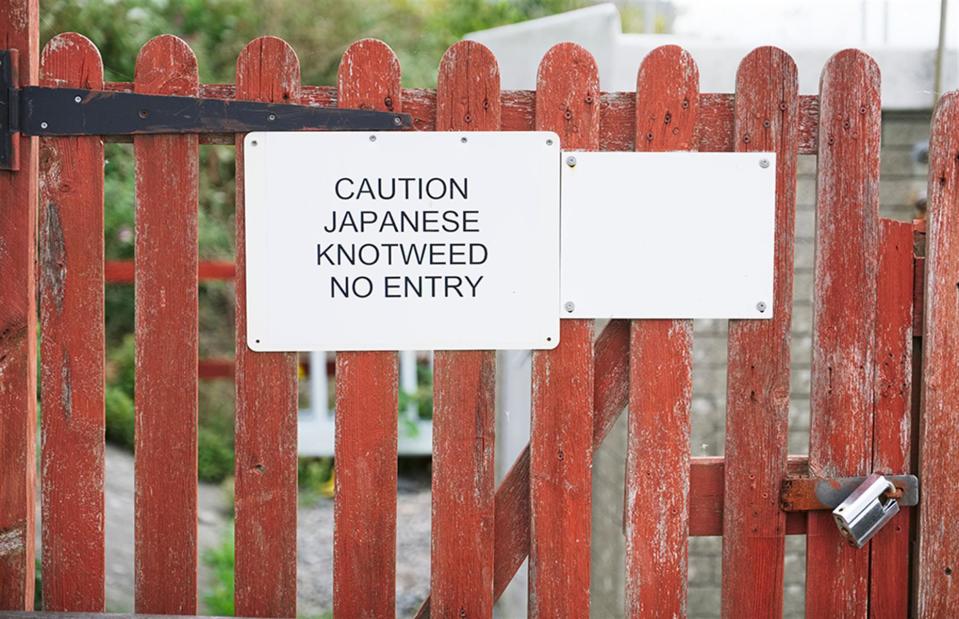
2018 richardjohnson / Shutterstock
The problem with Japanese knotweed is that it can grow 10-13 feet in just 10 weeks, and though it can be managed, effective treatment can take up to five years. You can manage small patches on your own, but as it is considered controlled waste, it can only be disposed of at licensed landfill sites. For peace of mind, it is best practice to enlist the help of a Japanese knotweed removal specialist.
Golden bamboo (Phyllostachys aurea or Bambusa vulgaris)
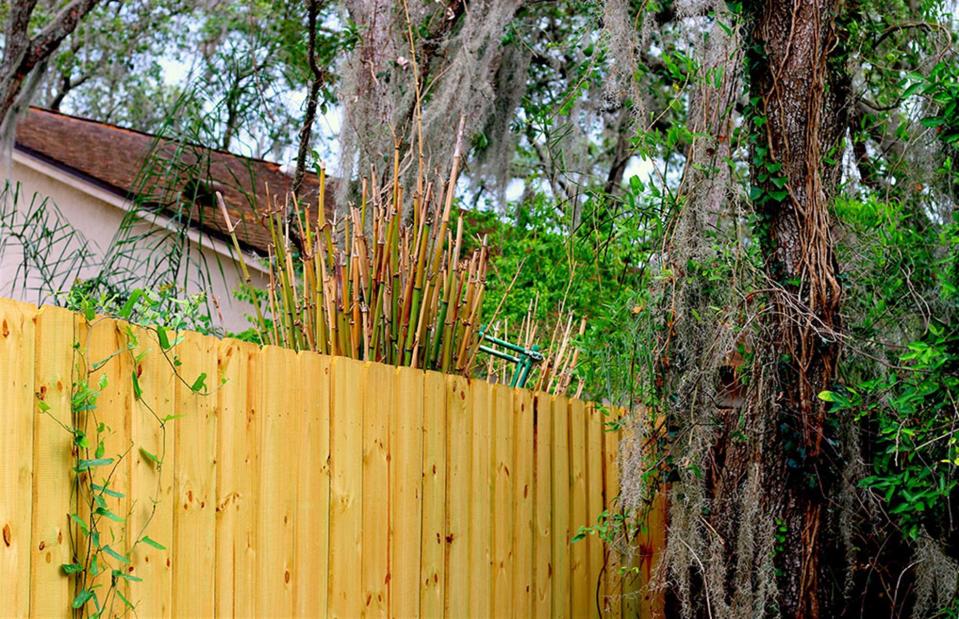
2017 Brittx / Shutterstock
Though Japanese knotweed hogs the headlines, bamboo can be every bit as damaging if not kept under control. In one case in 2022, a homeowner was left with thousands of pounds worth of bamboo damage, when bamboo from a neighbouring property infiltrated their home, going under the foundations and pushing up through the ground floor.
How to identify bamboo
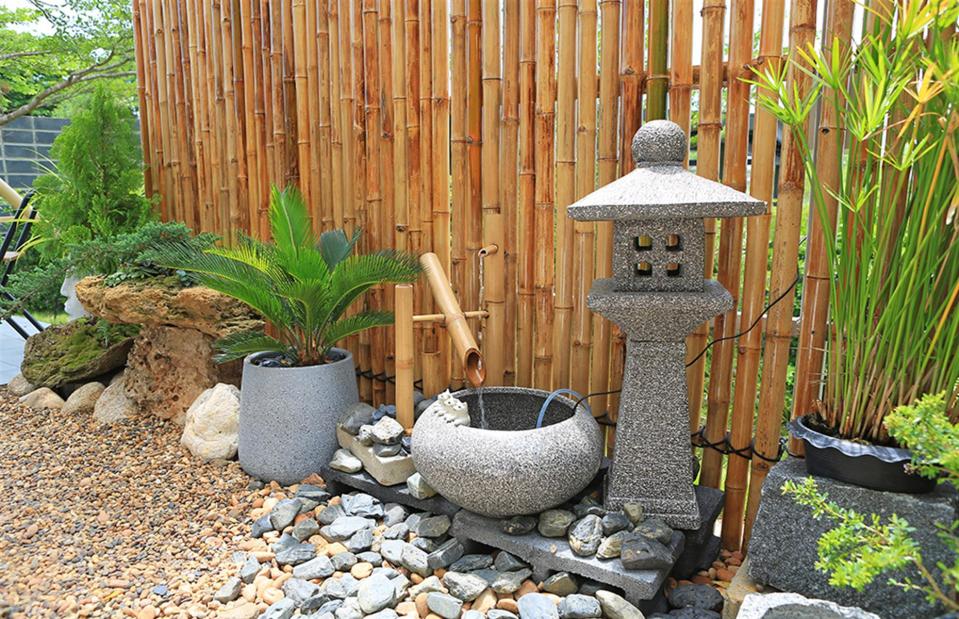
2022 GOLFX / Shutterstock
Unlike many invasive plants, bamboo is often deliberately added to gardens by homeowners looking for a little privacy or a certain aesthetic. It is noted for its thick, yellowy canes and, if planted directly into the ground, the roots of golden varieties in particular can grow at an astronomical rate – travelling over 30 feet – and is strong enough to push up through bricks and concrete. If buying a property with bamboo in the garden – it currently does not have to be declared – then it's recommended to get a proper survey done to assess the risk.
Bamboo treatment
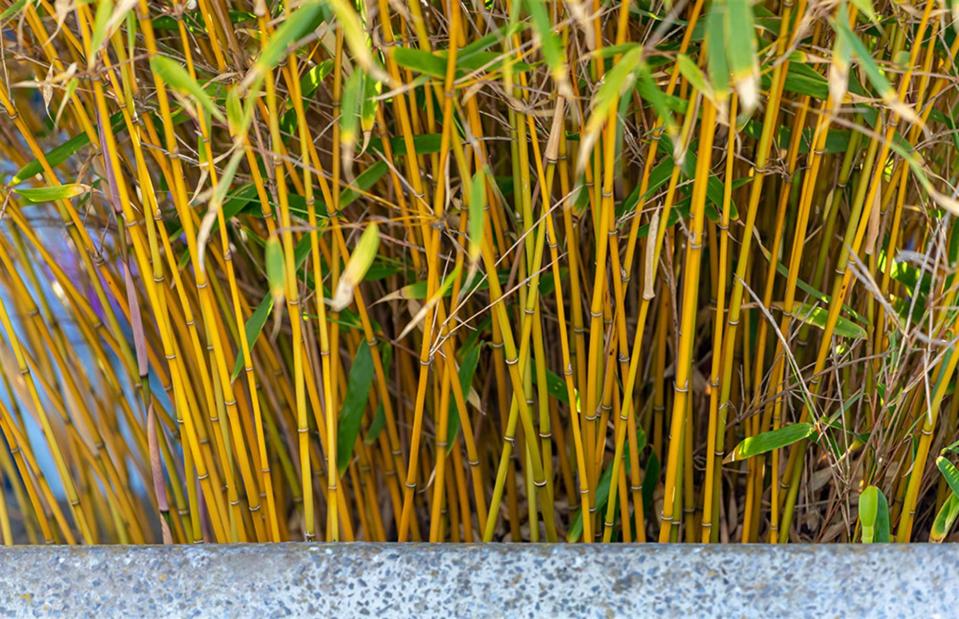
2019 Wut_Moppie / Shutterstock
Prevention is key when adding bamboo to your garden – always plant in pots to contain the roots, avoid running varieties and prune regularly. Some people attempt to manage infestations themselves by cutting the canes to the ground when new leaves appear, but if you are concerned, get a specialist in, who can excavate fully and give you a five-year guarantee.
Ivy (Hedera helix)
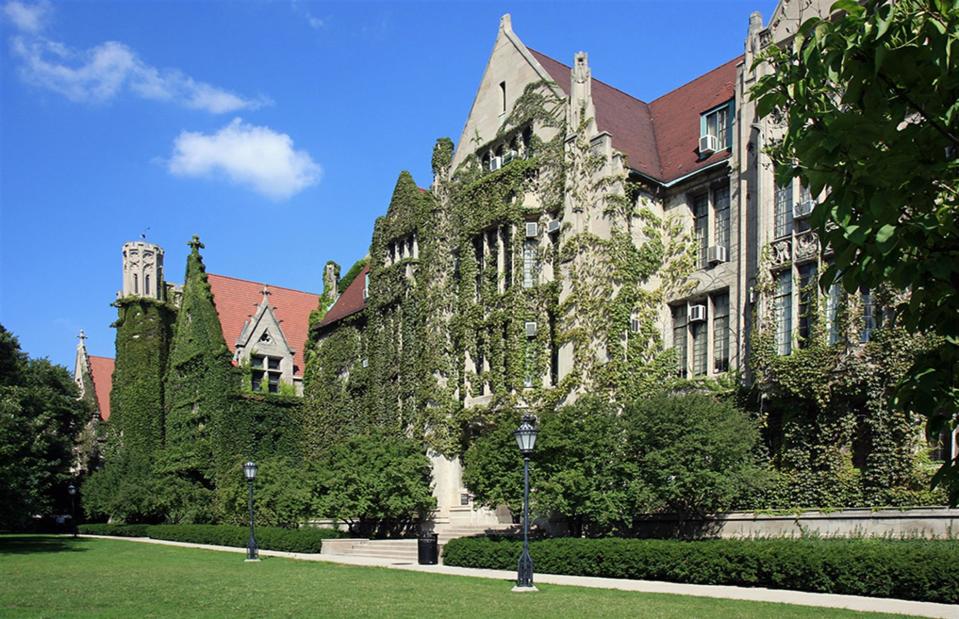
2011 Thomas Barrat / Shutterstock
According to the Royal Horticultural Society (RHS), the various types of ivy have a lot to offer gardeners, attracting wildlife and keeping buildings cool in summer and less damp in winter. However, though ivy-clad buildings are very romantic-looking, on older buildings with cracks or crumbling façades, English ivy, with its strong aerial roots, can exploit vulnerable parts of a property’s structure. It can also act as a cloak, hiding any damage to a building until it’s too late.
How to identify ivy
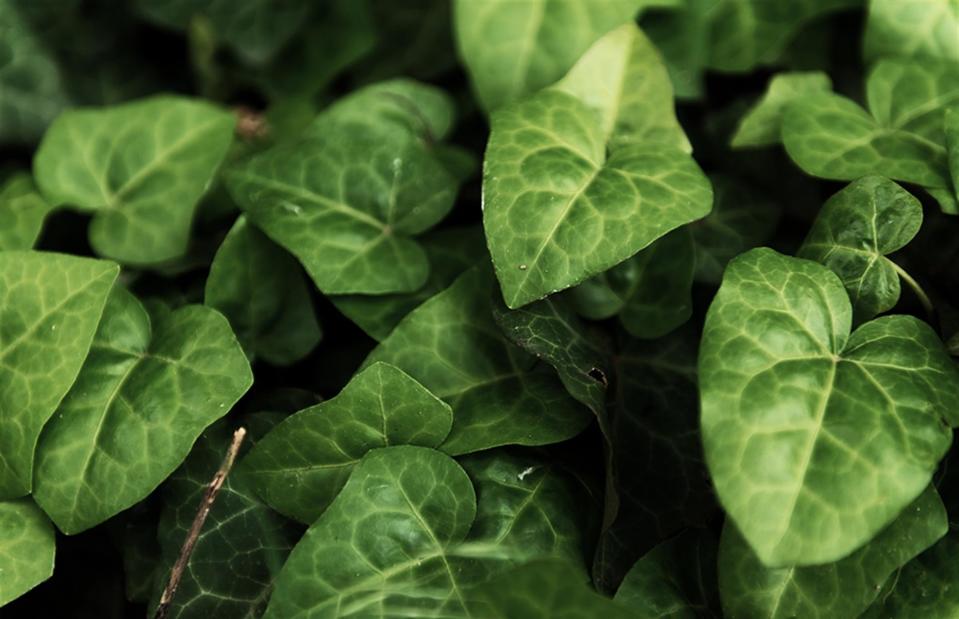
2014 SvedOliver / Shutterstock
You will recognise ivy from its dense, evergreen foliage. When it is climbing, it has glossy, five-lobed leaves and its aerial roots run off the stems and it is these that cling to walls. If there are no cracks in the building, the main thing to worry about is pruning the ivy back around any openings such as gutters. If you are concerned about the fabric of the building, you may need to get more hands-on.
Ivy treatment
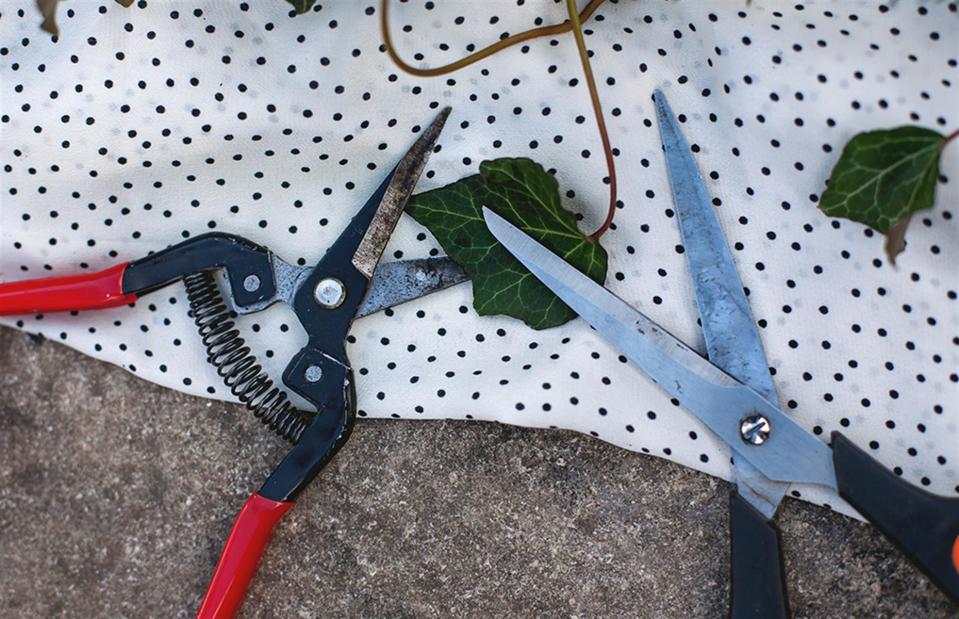
2021 Odri Stachiw / Shutterstock
Before pruning or cutting back, you’ll need to check there are no nesting birds as it is illegal to destroy any bird nests while they are still in use. Then the RHS suggests cutting the stems back to the ground and digging out the wooden stump. Aerial roots are stubborn and may need to be removed using a hard brush or some kind of scraper. Only resort to chemical controls if really necessary and even then only in a “highly targeted manner”.
Giant hogweed (Heracleum mantegazzianum)
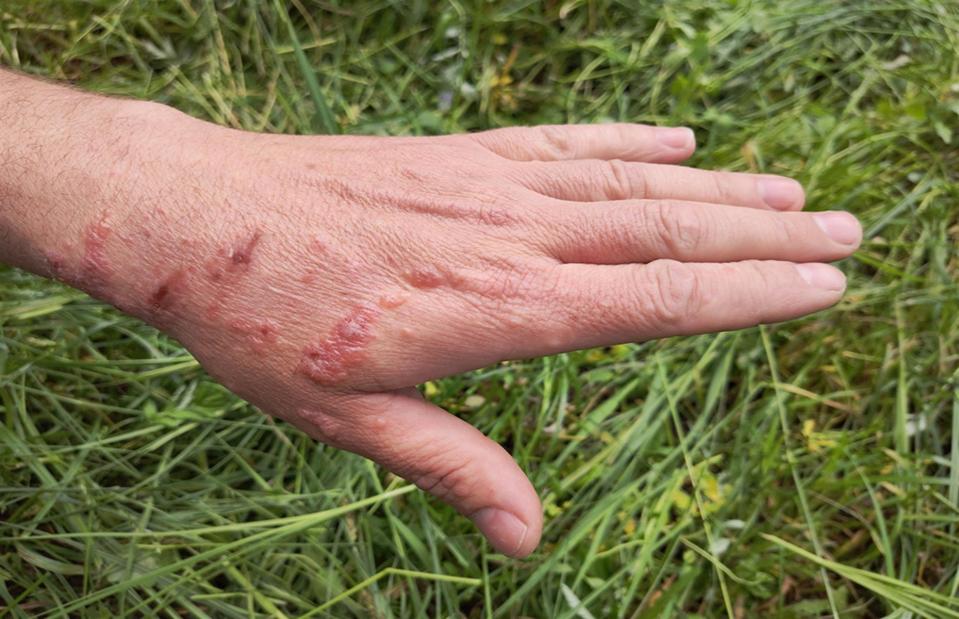
2019 grisdee / Shutterstock
CEL Solicitors says that it is illegal to either plant giant hogweed or allow it to grow. It is considered hazardous – there are toxic chemicals in its sap that can sensitize human skin to ultraviolet light, causing it to blister within two days and the effects can last for years. If the plant is found within the perimeter of your property you must take precautions to stop it spreading to neighbouring homes.
How to identify giant hogweed
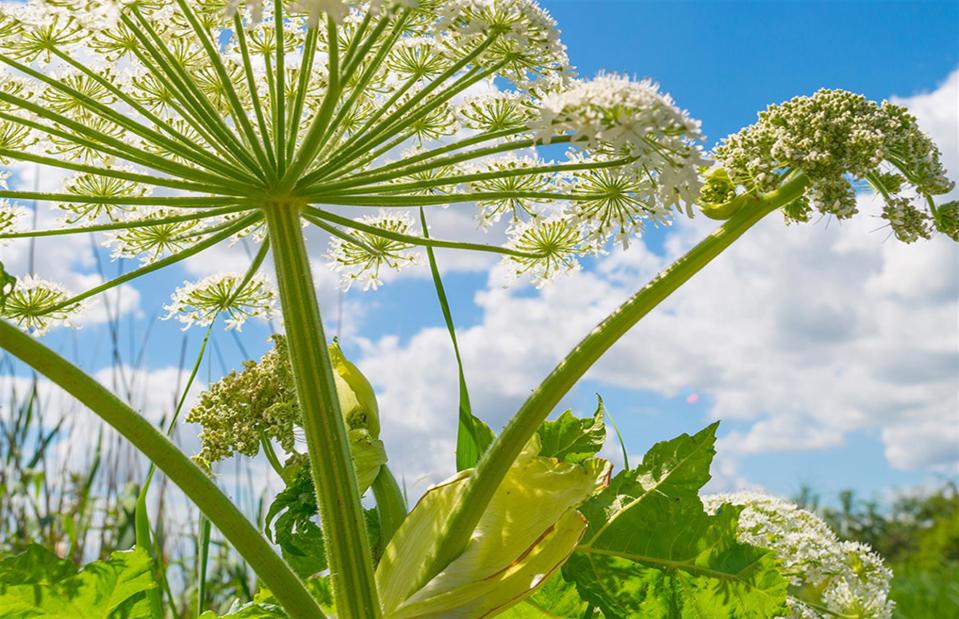
2017 Marijs Jan / Shutterstock
According to the GB Non-Native Species Secretariat (NNSS), giant hogweed is a member of the cow parsley family that has flowering stems that are typically 6.5–10 feet high. It has umbrella-like flower heads and large, jagged leaves and is often found near streams and rivers. It causes a great hindrance to anglers and it was introduced to gardens in the 19th century as a “monumental curiosity”.
Giant hogweed treatment
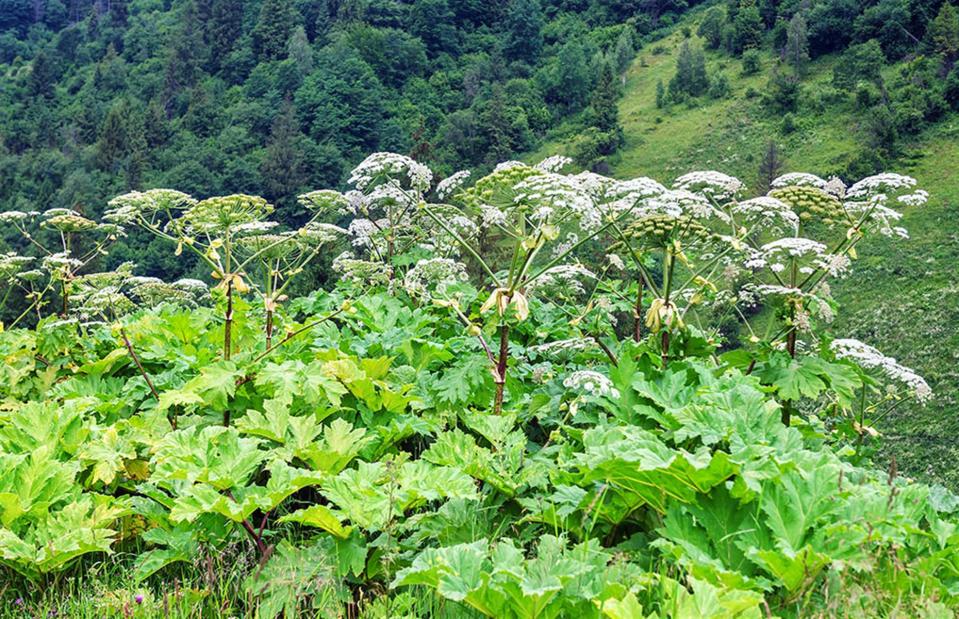
2018 Vova Shevchuk / Shutterstock
The RHS suggests that if you find giant hogweed in your grounds you should cover yourself well with gloves, trousers and long sleeves, and ideally a face mask to avoid burning the skin before attempting removal. It says May is the best time to attempt to pull young plants up by hand. Do not let hogweed set seed (it reproduces entirely from seed) but remove before the flowers start to fade.
Himalayan balsam (Impatiens glandulifera)
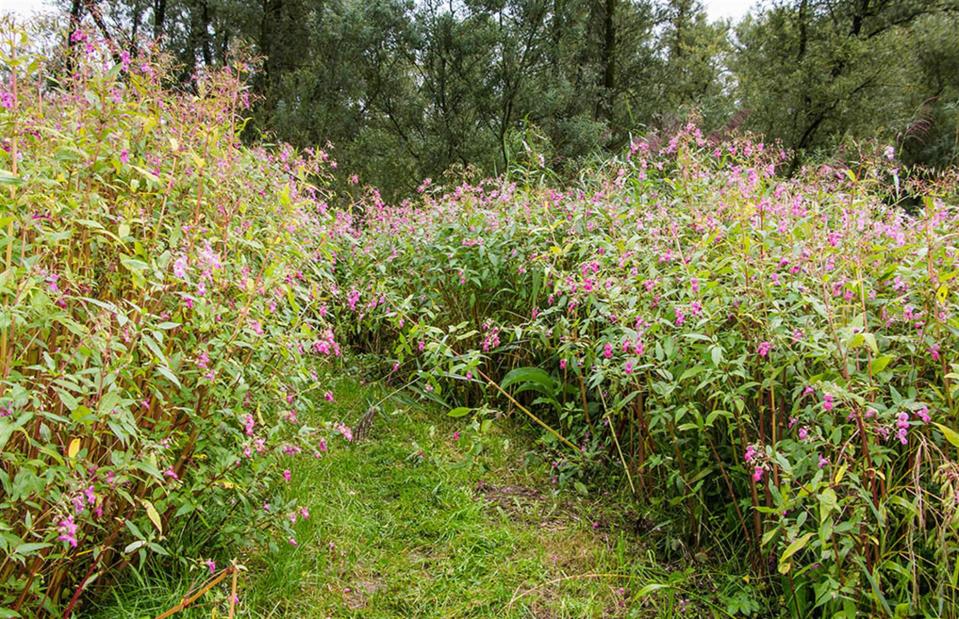
2015 INTREEGUE Photography / Shutterstock
Though a non-native invasive plant, Himalayan balsam has now been naturalised meaning it has adapted to the environment in the UK and easily spreads. It is very tolerant of low light and shade and grows quickly, often “smothering” other vegetation, according to the RHS. It is an offence to grow it in the wild.
How to identify Himalayan balsam
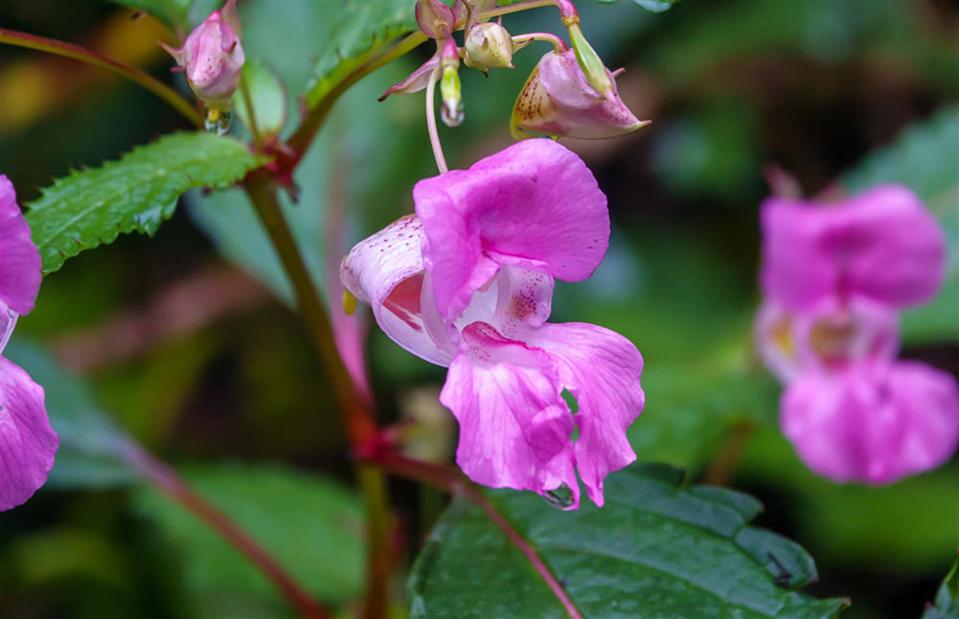
2021 Martin Hibberd / Shutterstock
Related to the Busy Lizzie plant, this riparian plant species grows tall annually and between June and October it is identifiable by its pretty pink/purple flowers, which are helmet shaped. After flowering, seed pods can be seen, which explode open when ready and its long, pointy leaves, serrated at the edge, are also a telltale sign.
Himalayan balsam treatment
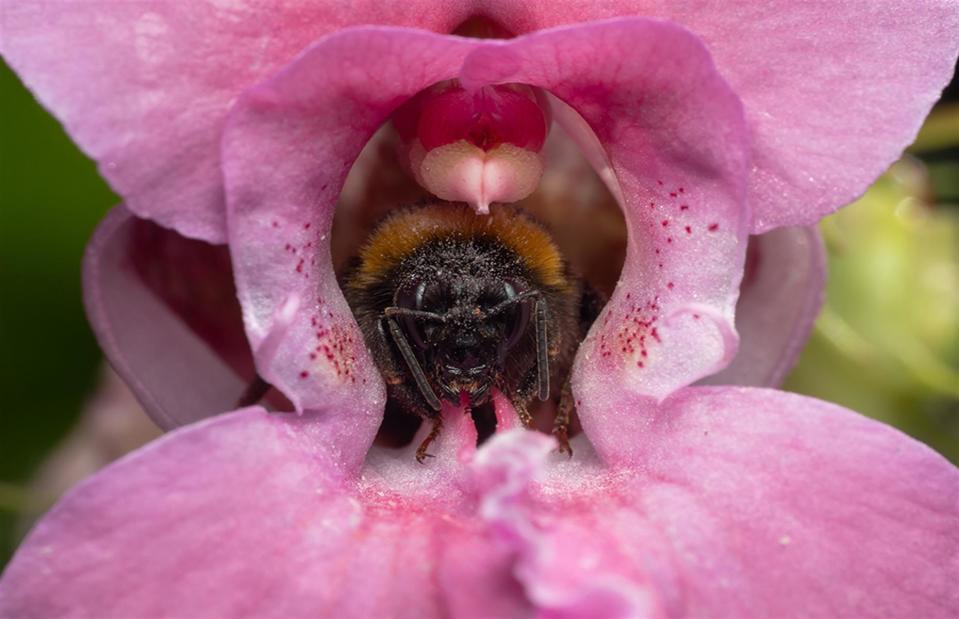
2022 Joshua Clarke / Shutterstock
Some gardeners grow Himalayan balsam deliberately as it produces a lot of nectar and therefore is great for attracting bees, but largely it is considered a nuisance. To get rid, you can try pulling and cutting the plant back – ideally before they flower or seed each year – and for problematic areas, a weedkiller based on glyphosate can be applied to the foliage. Used carefully it shouldn’t damage nearby plants – just make sure the spray doesn’t drift over to other ornamentals.
Rhododendron (Rhododendron ponticum)
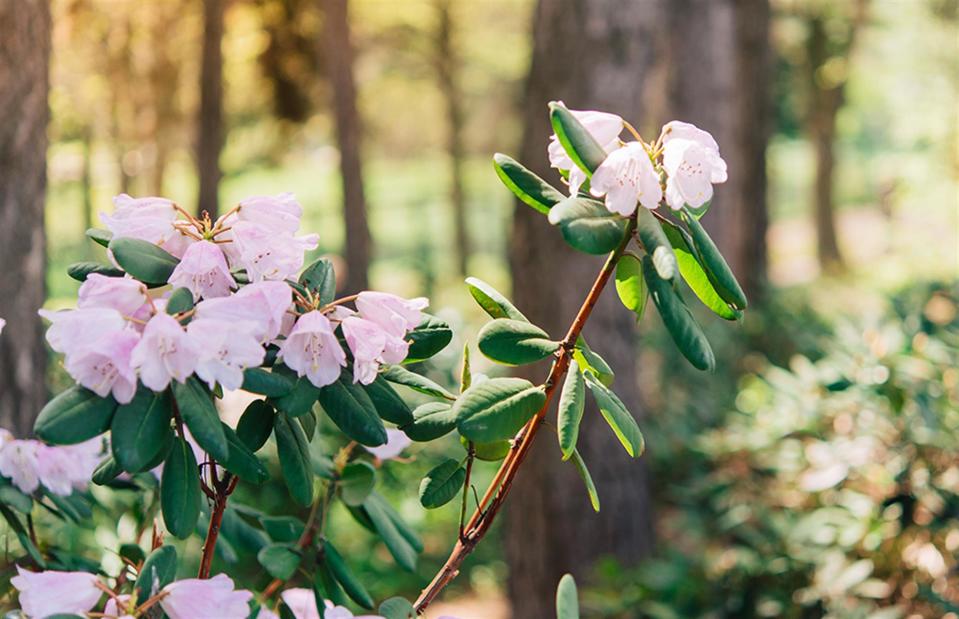
2021 Svechkova Olena / Shutterstock.
This non-native species is the bane of many land management schemes and is frequently seen on large estates. Its dense thickets create huge areas of shade that are detrimental to native plants. It is also poisonous to livestock and so, according to the NNSS cannot be managed by grazing. Once it has invaded a garden or other area, few other plants can survive, though the plant itself is prone to diseases.
How to identify rhododendron
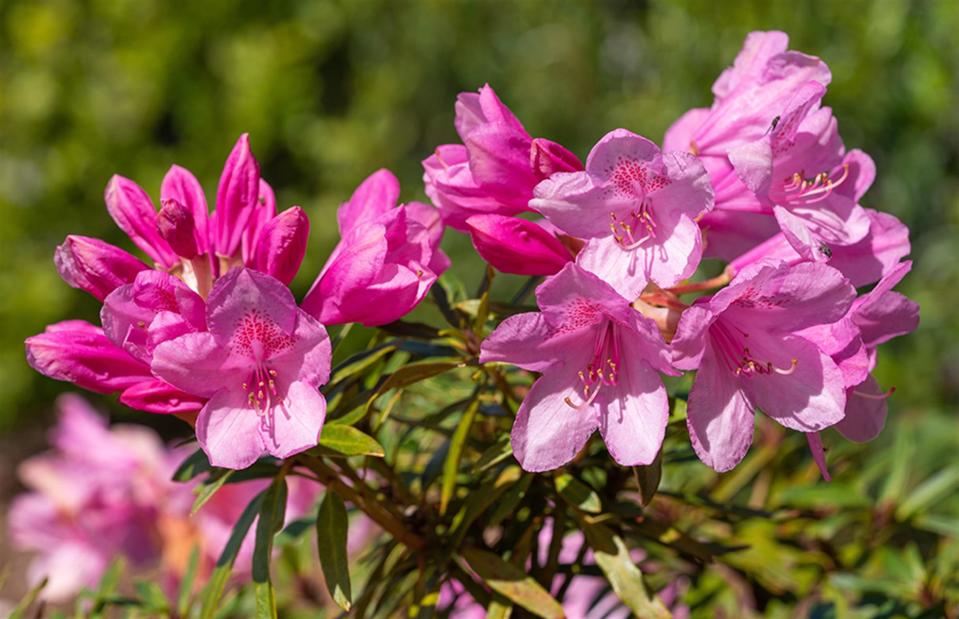
2020 alfotokunst / Shutterstock
Evergreen and hardy plants, rhododendrons are identifiable by their dark green leaves, which are dense and glossy, and they have woody stems that become trunk-like as the plant ages and its roots really get stuck in. They can grow to between 11.5–33 feet high and the bright flowers are often purple in colour.
Rhododendron treatment
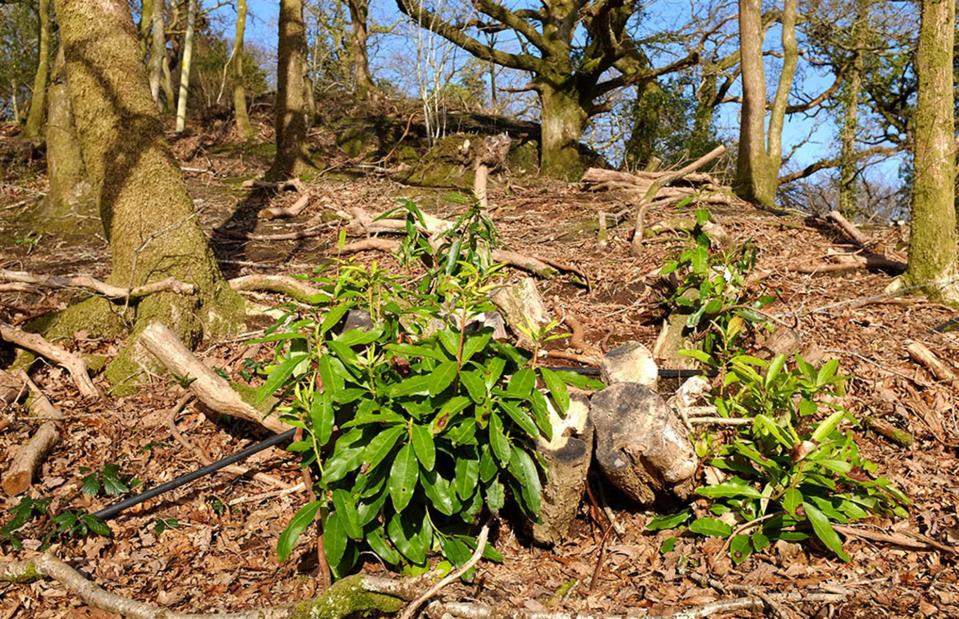
2014 richsouthwales / Shutterstock
In Scotland, where rhododendrons are a major threat to native plants and the many rewilding projects underway, Forestry and Land Scotland says it is working hard to eradicate the plant, "using chainsaws, herbicides, heavy machinery and considerable human muscle power". When the stumps or seedlings start to grow, measures are then taken to try to remove the seed source.
New Zealand pygmyweed (Crassula helmsii)
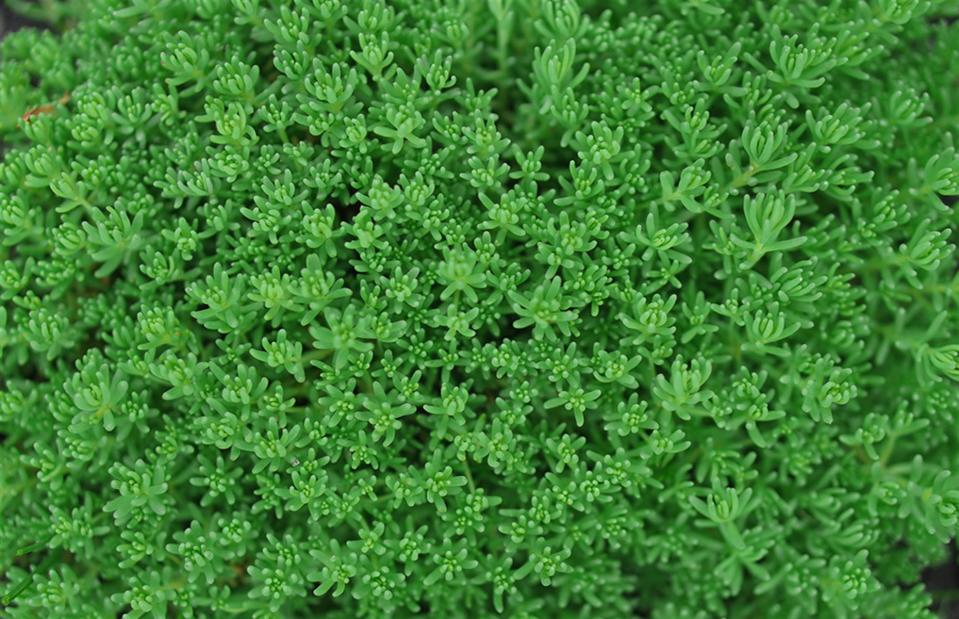
2020 Daria Khalaim / Shutterstock
Sometimes known as the Australian swamp stonecrop, you may find this yellowy-green aquatic plant in your pond. The large mats it creates shade out other plants and reduce the oxygen in the water below so it can be very harmful to any pond life within, including fish, newts, tadpoles and frogs. As such, it is one of five water plants that are now illegal to sell in the UK.
How to identify New Zealand pygmyweed
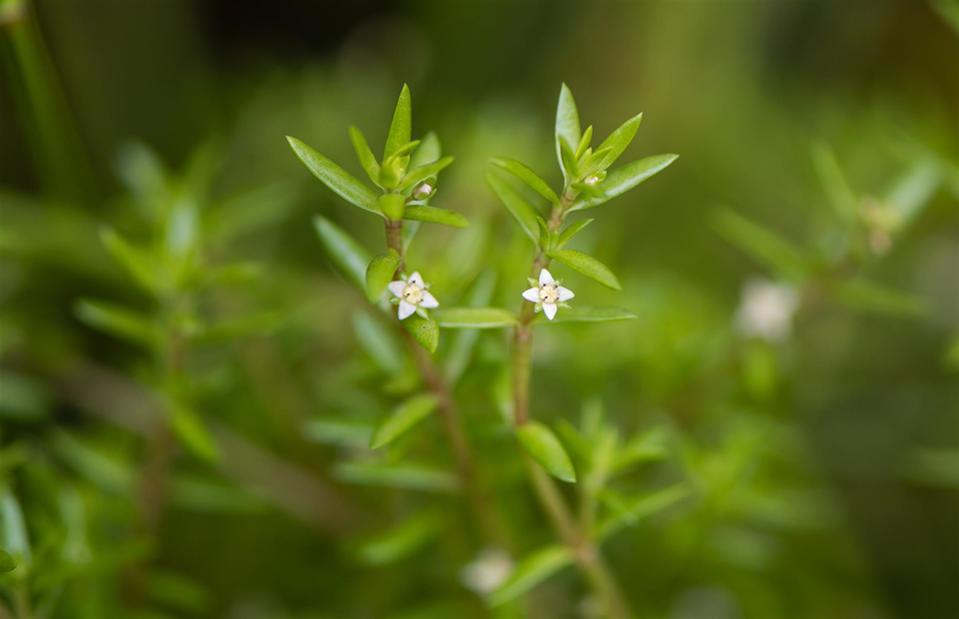
2017 IanRedding / Shutterstock
It can usually be identified by its fleshy leaves at the edge of the pond, though when the mats become flatter and submerged they can be harder to spot. The leaves grow in pairs along the round stem and sometimes flowers are present, which have four petals and are usually white or pale pink.
New Zealand pygmyweed treatment
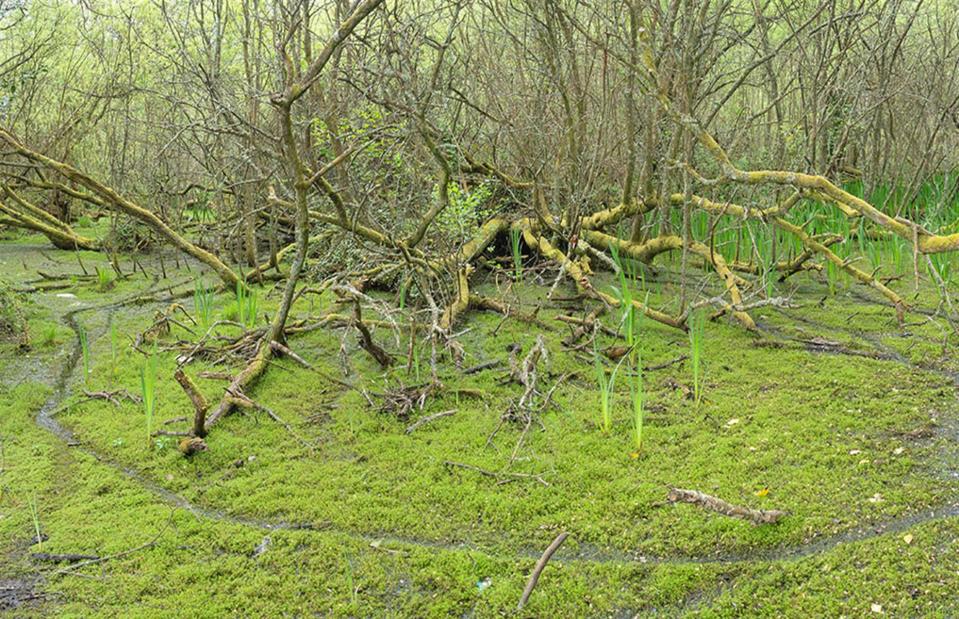
2018 Dr Morley Read / Shutterstock
Glyphosate-based herbicides can be used to some effect (best on the leaves themselves) but you will probably want to drain the pond first for the most effective treatment. The plant can travel from one pond area to another on clothes and equipment, so be sure to clean everything down once you’ve worked on it.
Green alkanet (Pentaglottis sempervirens)
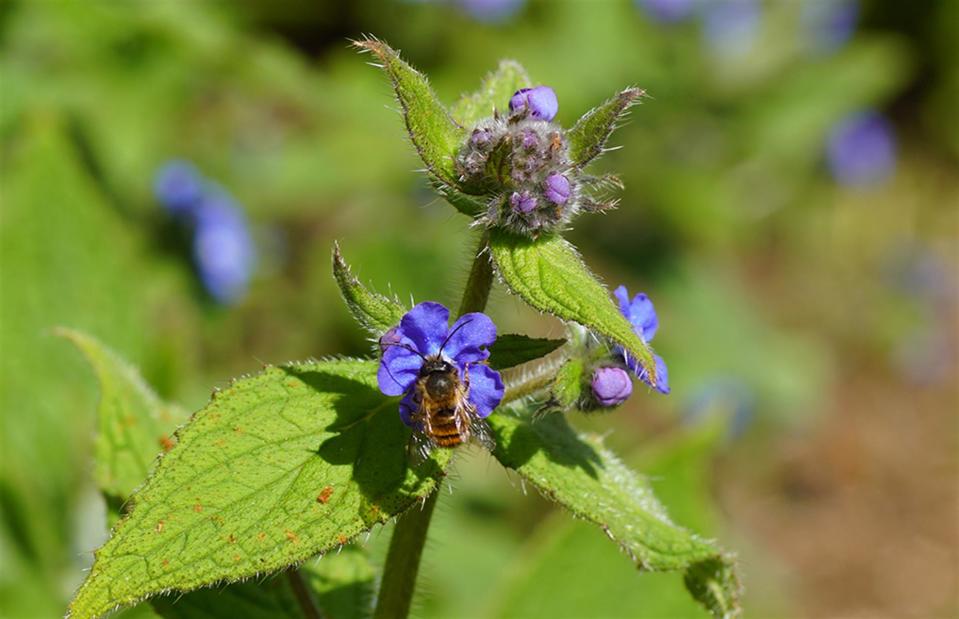
Thijs de Graaf / Shutterstock
Found in damp, shady places, this perennial, which is considered a weed by many, is not illegal to grow in the UK. It is still often cultivated in gardens due to its pretty flowers, but as well as being pollinated by bees, it can easily travel on pets or clothing and can reseed itself, hence it can quickly take over.
How to identify green alkanet
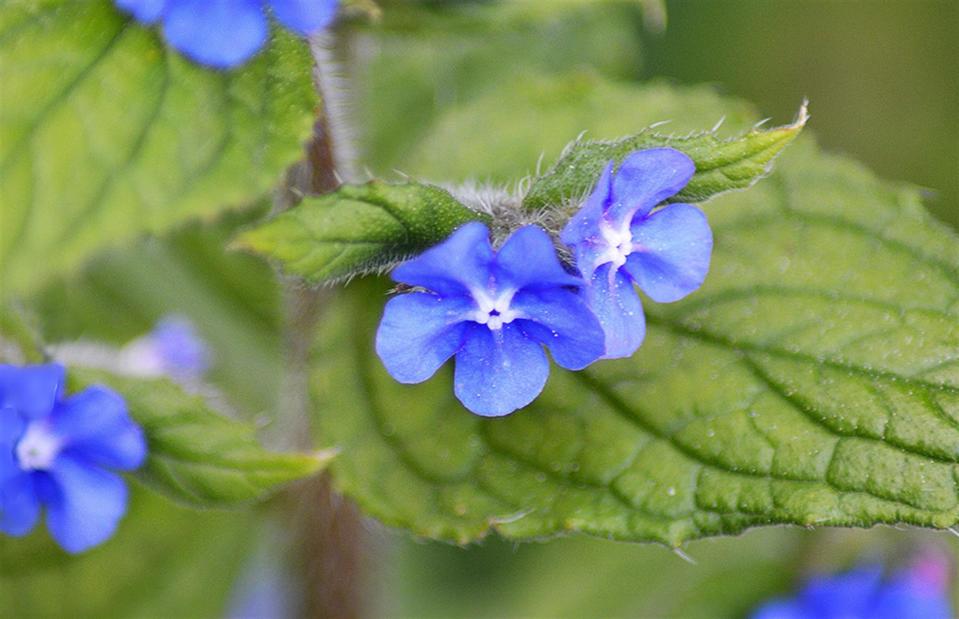
2023 douglasmack / Shutterstock
Part of the forget-me-not family of flowers, the RHS says the green alkanet can be identified by its hairy stems and its leaves, which are both bristly and broadly ovate. The flowers are blue with a white centre and there are pink buds from April to June.
Green alkanet treatment
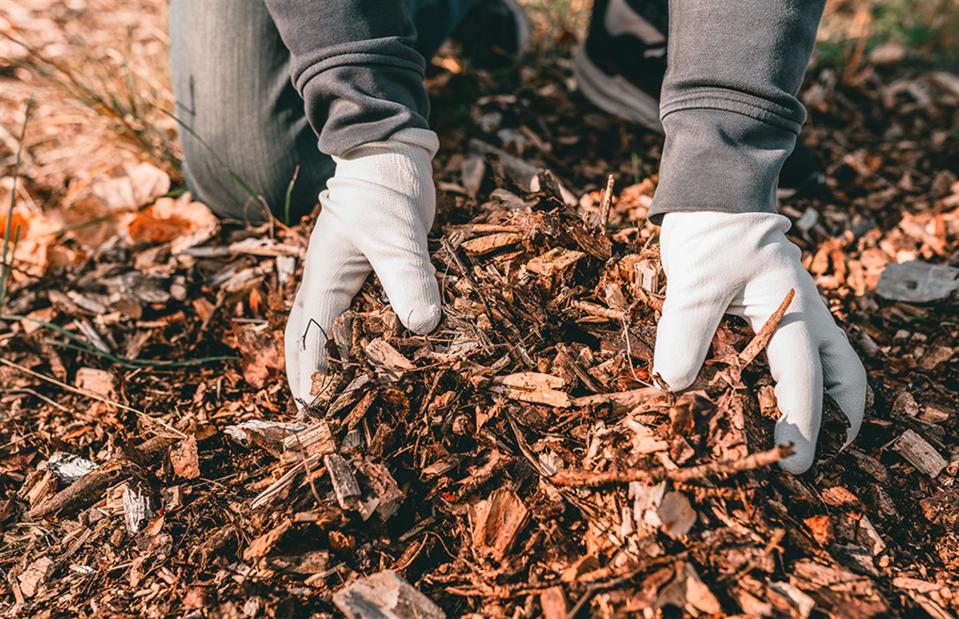
2021 larisa Stefanjuk / Shutterstock
The RHS advises digging deeply to remove roots, though hand weeding and hoeing any seedlings as soon as you spot them is also good. Try to hoe the seedlings promptly before the plants flower and you will need to stay on top of this throughout the year. A mulching film or layer of woodchips for an organic alternative to a depth of at least 8cm can also prove useful.
Three-cornered garlic (Allium triquetrum)
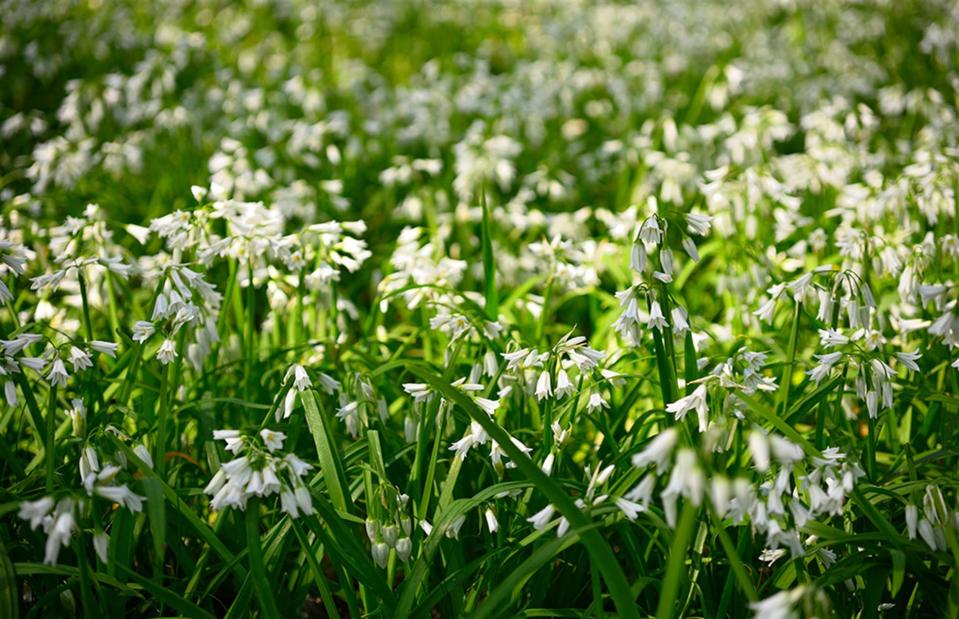
2021 AlessandroZocc / Shutterstock
Though all parts of this plant are edible, it is illegal to plant or grow it in the UK. This is because it can quickly form dense colonies that can overrun native plants like primroses and violets. It’s spread largely via ants, who carry its large seeds to new locations, where it can easily spread.
How to identify three-cornered garlic
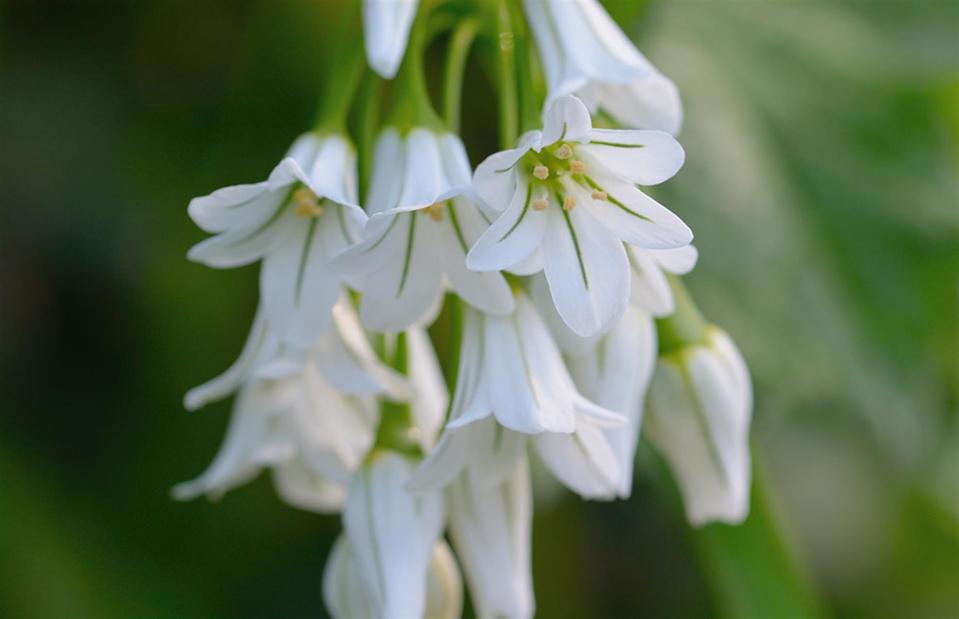
2017 Tom Meaker / Shutterstock
According to Wild Food UK, this non-native plant is quite easy to identify thanks to its flowers that hang in clusters and resemble white bluebells with a green stripe along each of its six petals. Before opening they are covered in a lanceolate sheath and they also have long, thin V-shaped leaves.
Three-cornered garlic treatment
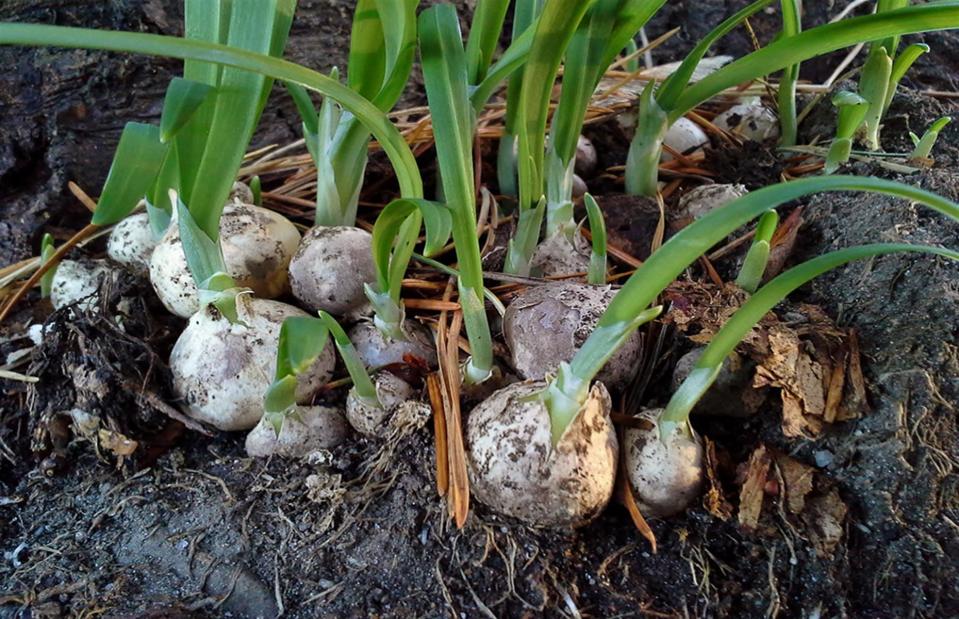
2017 EMFA16 / Shutterstock
Though the RHS doesn’t have specific advice on the removal of this form of wild garlic, advice for other garlic varieties will also work here: namely to remove all bulbs with a hand trowel or fork. It’s not an easy task and you may have to also sieve the soil to make sure you’ve got rid of even the smallest of bulbs. If you must resort to weedkiller, it says to take extra care around the wooden bases of nearby shrubs and trees so they don’t absorb any of the sprays.
Loved this? Follow us on Facebook for more gardening advice


